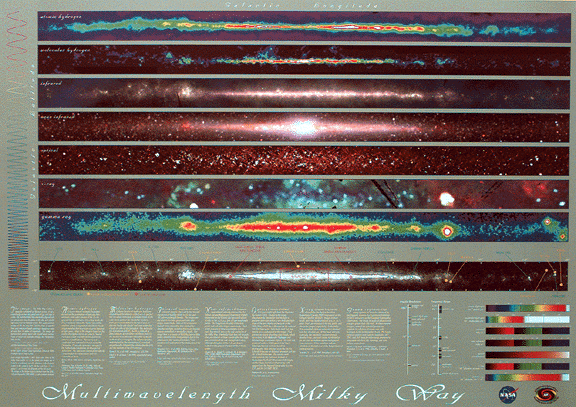Interstellar Extinction
Interstellar ExtinctionWhat is the Interstellar Medium?The interstellar medium, which makes up ~1/3 of the visible mass of the galaxy, is almost entirely comprised of hydrogen gas. Depending on the proximity to nearby stars, it can be either molecular (H2), atomic (HI), or ionized (HII). The next most abundant element is helium. That's pretty much it. In fact, many astronomers refer to elements in space as hydrogen, helium, and "metals". Those metals, which make up ~1% of the mass of the ISM are primarily composed of small iron particles and silicate and carbon soot. This soot, or "dust" as it is generally called, while a tiny fraction of the galaxy, plays an extremely important role both in how we observe the heavens, and on our life on this planet. Why do we care about dust?The ISM is approximately 1/3 of the visible galaxy, which is in turn about 1/10th of the total mass of the galaxy. Carbon and silicate make up about ~1/100 of the mass of the ISM. This makes dust ~< 0.03% of the galaxy. To make matters worse, this dust is spread out over an enormous volume, in near perfect vacuum. The average number of hydrogen atoms per cubic centimeter is ~0.1 per cc. Given that there are about 1000 hydrogens for every carbon atom, and 109 carbon atoms in a 0.1 micron dust grain, that makes about 10-14 carbon dust grains in every cubic centimeter. To put this in perspective, consider a football or soccer practice field (two fields side by side, about 100 by 100 meters). Make a cube with each practice field as a side. For every 1 million cubic practice fields, there is one dust grain. So once again, what can this one grain in every million cubic practice fields do to make us care?
A dramatic example of how important the interstellar medium is can be seen by looking at our galaxy in multiple wavelengths. A small version is presented here, and high resolution images are available through NASA. Click here to see NASA images of the Milky Way at different wavelengths. If we compare what we see in wavelengths corresponding to molecular hydrogen (where the most dust is!), we see that it corresponds perfectly to large "holes" in the visible Milky Way! While it is difficult to see this dust directly, we can look at the absorption of light by stars which are partially obscured by dust, and use this information to tell us about the properties of the intervening material. As voyages to the distant stars are at this time not an option for discovering the makeup of the galaxy, astronomers are forced to rely on observations from the Earth or it's very near vicinity in order to gain information about the cosmos. This information comes to us in the form of small packets of energy called photons (light to the layperson), and interpreting the meaning of how these photons arrive at our retina or our telescope requires us to look at the physics of what happens to light as it travels though a medium. The two processes which concern us most are absorption and scattering. Absorption occurs when photons strike matter and are converted to energy within the matter. For example, when getting a suntan on the beach, UV photons being absorbed by the skin are converted to heat energy within the skin, felt as the warmth of the sun. Scattering occurs when light is deflected from it's original course, but not converted entirely to energy. |




